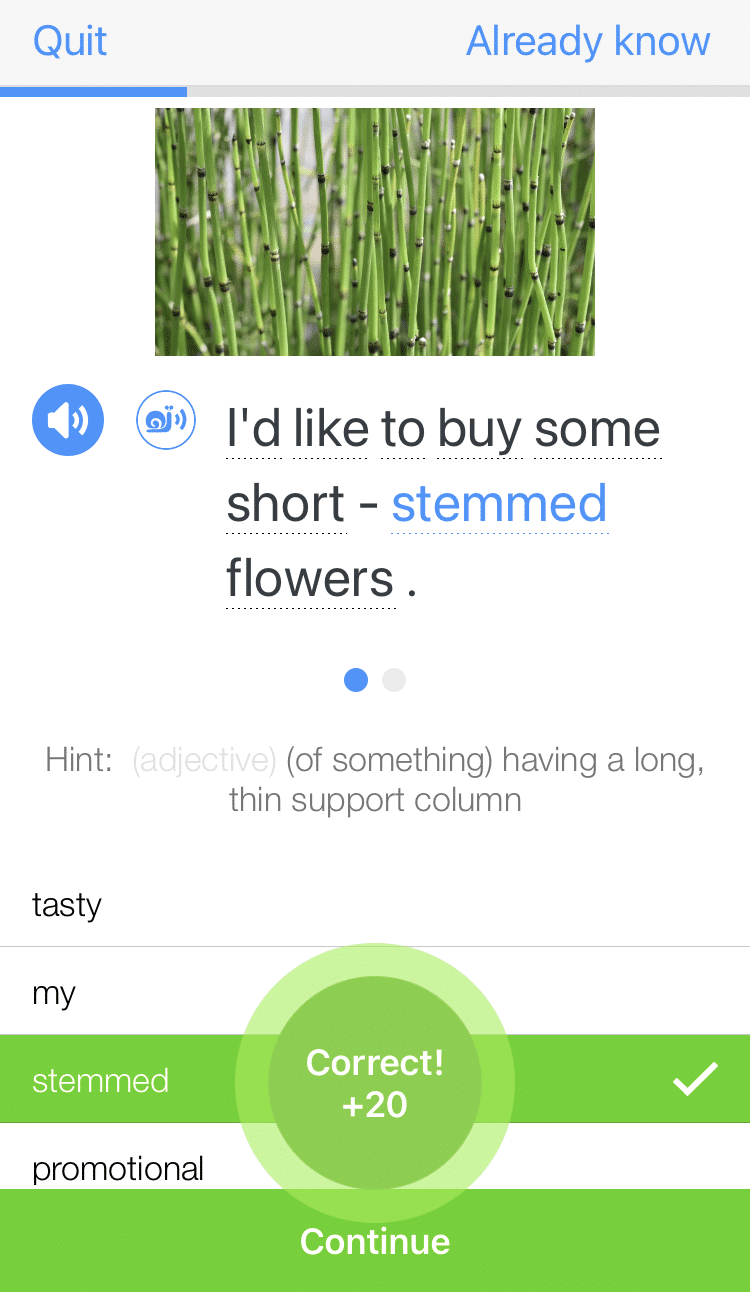A Simple Guide to English Body Language

If you really want to be fluent and communicate effectively with English speakers, you will need to understand what types of body language they use. You can have entire conversations using only body language.
You just need to “read” the body language while conversing in English—and this guide will help you with precisely that.
Download: This blog post is available as a convenient and portable PDF that you can take anywhere. Click here to get a copy. (Download)
What is Body Language?
Body language is communication without words. It is the movement of facial features or body parts, which intentionally or unintentionally express thoughts and attitudes. Here are three key types:
- Facial expressions: A smile, a slight frown or a straight face are all different expressions that add another layer of meaning to what you are saying. Eye contact is an especially significant part of body language that you need to pay attention to while speaking English or listening to someone else.
- Hand gestures: When you talk, do you move your hands around or do you keep them at your side? Folded arms, hands on hips or hands in pockets can create different messages even if you are saying the same thing.
- Body position: The position of your body also means a lot. Leaning forward while somebody is speaking or how far you stand apart from your audience—it all matters.
How to Use English Body Language
Below, you will learn about essential types of body language that English speakers use, organized by theme. At the end of the list we will provide an exercise to help you practice and master English body language.
Body Language for Disagreement/Sarcasm
Sometimes people fail to express themselves clearly with words. Sometimes people intentionally say the opposite of what they mean.
Therefore, learning a few common body gestures that indicate a contradiction, sarcasm or confusion can be helpful to avoiding misunderstandings.
Eye rolling
Most people roll their eyes to show disapproval or annoyance, as in this clip from the American TV Show “30 Rock.”
English speakers will also roll their eyes when they feel skeptical about something.
For example, if your friend rolls her eyes while saying “I wonder if my brother is going to be on time,” she is probably implying that she thinks he will be late as usual.
Many English speakers roll their eyes while using the sarcastic phrase yeah, right. This actually means “I doubt it” or “probably not.”
“He told me he is dating a movie star.”
[Eye roll] “Yeah, right.”
Air quotes
In the English-speaking world, people often make this gesture, where they move their index fingers and middle fingers of both hands up and down. They do this to stress a word or phrase, mainly because they do not think it is the right word to use in that situation. Air quotes usually connote sarcasm.
“My roommate said that she could not come because she is [air quotes] working.”
In this case, the speaker thinks the roommate is not actually working. Maybe she has a habit of using this excuse when she does not want to leave the house.
Arms crossed defensively
If someone crosses his/her arms, it often means that he/she disagrees with what is being said.
For example, imagine you are arguing with a colleague because you think the team should do a task differently. He says, “I hear the basis of your arguments,” but his arms are crossed over his chest. Despite his words, he probably does not agree with your idea at all.
Head shaking
In the English-speaking world, head shaking typically indicates disagreement or disappointment.
Often, you might ask someone a question and instead of answering with words, he/she will simply shake his/her head back and forth. That means, “no.”
Other times, English speakers will shake their head while speaking to emphasize their point.
“Do you think our boss was right to give us extra hours this weekend?”
[Head shaking] “No way! So unfair!”
When you are using English online, you might encounter the internet slang smh. That means “shaking my head,” and it indicates disapproval.
Body Language Showing Distraction/Confusion
Sometimes, you feel like people do not pay enough attention to what you are saying. Your listeners might be distracted by a notification on their phones or something else on their minds.
It is useful to be able to read body language that indicates confusion and distraction. Here are some examples:
Avoiding eye contact
The frequency and intensity of eye contact depends on a person’s cultural background and personality. However, in the English-speaking world, a person often holds eye contact when he/she converses with others. If you detect a lack of gaze, it could mean that your listener is:
- Distracted
- Confused
- Bored
- No longer able to follow the conversation
If someone is avoiding eye contact with you, just smile and check in with them verbally. Some common expressions to do this include:
- Am I making sense? (Am I speaking in a logical/understandable way?)
- Are you still with me? (Are you following/understanding what I am saying?)
- Are we on the same page? (Are we in agreement/understanding each other?)
- Is anything unclear? (Is anything about what I am saying confusing?)
Scratching face/rubbing nose
If you are explaining a new project to your teammate and he keeps scratching his face or chin, it is likely that he does not fully understand. He is confused.
When you see such body language, you can use one of the expressions above to draw attention and encourage your listener to seek clarification.
Resting head in hands/playing with hair
Both of these gestures indicate that someone is bored and distracted. If you are telling your friend about your weekend biking trip, but she keeps playing with her hair, she probably has something else on her mind, like what to cook for dinner.
Body Language to Appear Confident
Understanding body language also helps when you talk. You can show your confidence not only with words, but also with the right body language.
Nodding
If you remember from above, shaking one’s head shows disagreement. Nodding (moving your head up and down) is the opposite. It expresses that you agree with someone.
Therefore, make sure to nod your head when you say, “that is an excellent idea” to show your friend that you genuinely agree with her.
Smiling
A smile makes you appear friendly and encourages others to open up to you. When you ask for feedback about your project, add a smile to this question: “What do you think of it?”
You will come across as being confident about your work and willing to hear any feedback.
Gesturing with hands
Move your hands widely and decisively, and you will show others your ownership of the space and the topic.
For example, you can extend your arms to the sides and turn the palms up, moving them slightly left and right in sync with the rhythm of your speech. This movement is particularly helpful if you are presenting something to your team.
However, avoid doing it too extensively as it might distract from the content of your presentation.
Standing/sitting up straight
It is essential to stand or sit up straight. It makes you look taller and seem more important. So make sure you stand up straight when you introduce yourself with this sentence, for example:
“My name is Lila and I am the new marketing assistant.”
Open shoulders
An open stance in your shoulders and arms indicates that you are open to suggestions, ideas and even constructive feedback. Do not crouch or bend—this makes you look insecure.
Make sure to stand with an open position when you search for input from someone with a question like, “What do you think we can do better?”
How to Practice English Body Language
While learning the English language takes a lot of work, from mastering grammar to perfecting pronunciation, body language requires the same attention and investment.
What makes it even more challenging is that body language varies from culture to culture, as we mentioned earlier. (Did you know that in Bulgaria, people nod their heads up and down to mean “no?”)
Therefore, you need to learn body language from real English native speakers. But how can you practice if you are not currently living with English-speakers or in an English-speaking region?
With the internet, of course!
There are many different places to find videos to use for this.
For example, the FluentU program has authentic English videos with interactive captions that you can watch to learn body language.
FluentU takes authentic videos—like music videos, movie trailers, news and inspiring talks—and turns them into personalized language learning lessons.
You can try FluentU for free for 2 weeks. Check out the website or download the iOS app or Android app.
P.S. Click here to take advantage of our current sale! (Expires at the end of this month.)

You can also try out the following exercise while watching any YouTube video in English. Good channels to explore for this exercise include Go BodyLanguage, Long Story Short and Chad Vader.
- Pick a real-life English video with subtitles. Play it once without the sound or subtitles.
- Guess the relationships between the characters as well as the emotional feelings they express.
- Play the video again, listen to the conversation, read the captions and revisit your prediction. Does your understanding of the body language match the dialogue in the video?
- Take a break so you do not get overwhelmed.
- After your break come back to the video and pick a character to role-play.
- Record a video of your body language and compare it with the original.
Body language is a significant part of communicating in English. We hope this guide will help you better express yourself in English, with and without words!
Download: This blog post is available as a convenient and portable PDF that you can take anywhere. Click here to get a copy. (Download)
And One More Thing...
If you like learning English through movies and online media, you should also check out FluentU. FluentU lets you learn English from popular talk shows, catchy music videos and funny commercials, as you can see here:
The FluentU app and website makes it really easy to watch English videos. There are captions that are interactive. That means you can tap on any word to see an image, definition, and useful examples.
For example, when you tap on the word "searching," you see this:
Learn all the vocabulary in any video with quizzes. Swipe left or right to see more examples for the word you’re learning.

FluentU helps you learn fast with useful questions and multiple examples. Learn more.
The best part? FluentU remembers the vocabulary that you’re learning. It gives you extra practice with difficult words—and reminds you when it’s time to review what you’ve learned. You have a truly personalized experience.
Start using the FluentU website on your computer or tablet or, better yet, download the FluentU app from the iTunes or Google Play store. Click here to take advantage of our current sale! (Expires at the end of this month.)










